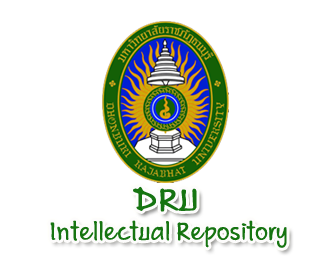Please use this identifier to cite or link to this item:
http://hdl.handle.net/123456789/1887Full metadata record
| DC Field | Value | Language |
|---|---|---|
| dc.contributor.author | Yang, Mu | - |
| dc.date.accessioned | 2024-06-24T07:02:53Z | - |
| dc.date.available | 2024-06-24T07:02:53Z | - |
| dc.date.issued | 2023 | - |
| dc.identifier.uri | http://hdl.handle.net/123456789/1887 | - |
| dc.description.abstract | The objectives of this research were 1) to study the competitive environments of A Company, and 2) to formulate sustainable competitive advantage strategies of A Company. In this study, a questionnaire was used to collect primary data from 50 internal employees to assess the past state of market competition. This assessment included competitor analysis, industry analysis, and consumer buying criteria. PESTEL and core competence were used to examine interview data from 3 experts and 9 corporate executives. The development of the Internal Factor Analysis (IFA) and External Factor Analysis (EFA) matrices, which produced a final factor assessment score, followed. To conduct SOTAR analysis, develop sustainable competitive advantage strategies, and design guidelines for implementing those strategies, brainstorming meetings were held with 3 specialists and 9 executives of the company. Additionally, the researcher utilized secondary information on A Company gathered from earlier research projects, reports, and records. The data were analyzed by content analysis. The study's conclusions showed that; 1) A Company conducted business in a cutthroat environment. A Company demonstrated strengths in production service, marketing service, financial management, and technological innovation. However, there was potential for improvement in sales service. A Company identified opportunities in rising consumer disposable income, market expansion, breakthroughs in battery technology, AI-driven demand forecasting, and government assistance. Nevertheless, A Company faced challenges such as declining subsidies, the emergence of alternative modes of transportation, market competition, requirements for battery safety, and the entry of established automakers into the new energy industry. A Company’s strengths were also evident in its solid supply chain, reliable human resources, core technological advantages, and brand recognition and; 2) the SOTAR analysis identified partnerships and alliances, vertical integration and supply chain management, market development and brand creation, customer-centric approaches, and technological leadership and innovation as sustainable competitive advantage strategies for A Company. | en_US |
| dc.language.iso | other | en_US |
| dc.publisher | Dhonburi Rajabhat University | en_US |
| dc.subject | New energy vehicles | en_US |
| dc.subject | Competitive strategy | en_US |
| dc.subject | SOTAR analysis | en_US |
| dc.subject | Dhonburi Rajabhat University | en_US |
| dc.title | Sustainable Competitive Advantage Strategy of Leading Electric Vehicle Enterprises | en_US |
| dc.type | Thesis | en_US |
| Appears in Collections: | Thesis Dhonburi Rajabhat University - วิทยานิพนธ์ปริญญาโท มหาวิทยาลัยราชภัฏธนบุรี | |
Files in This Item:
| File | Description | Size | Format | |
|---|---|---|---|---|
| Title 1.pdf | Title 1 | 129.02 kB | Adobe PDF | View/Open |
| Title 2.pdf | Title 2 | 50.92 kB | Adobe PDF | View/Open |
| Abstract.pdf | Abstract | 151.4 kB | Adobe PDF | View/Open |
| Acknowledgement.pdf | Acknowledgement | 59.9 kB | Adobe PDF | View/Open |
| Table of content.pdf | Table of content | 127.61 kB | Adobe PDF | View/Open |
| Unit 1.pdf | Unit 1 | 422.59 kB | Adobe PDF | View/Open |
| Unit 2.pdf | Unit 2 | 143.48 kB | Adobe PDF | View/Open |
| Unit 3.pdf | Unit 3 | 363.44 kB | Adobe PDF | View/Open |
| Unit 4.pdf | Unit 4 | 141.71 kB | Adobe PDF | View/Open |
| Unit 5.pdf | Unit 5 | 154.17 kB | Adobe PDF | View/Open |
| Bib.pdf | Bib | 147.6 kB | Adobe PDF | View/Open |
| Appendix.pdf | Appendix | 1.81 MB | Adobe PDF | View/Open |
Items in DSpace are protected by copyright, with all rights reserved, unless otherwise indicated.
